Red sunflowers are a unique, vibrant variety of sunflowers with rich red petals. These flowers add a bold and eye-catching touch to any garden or floral arrangement.
Red sunflowers are known for their distinct color and are a popular choice for those looking to make a statement with their floral displays. Whether planted in a garden or used as cut flowers, red sunflowers are sure to attract attention and brighten up any space.
They are a stunning addition to any flower lover’s collection and are a symbol of creativity and individuality. With their vibrant red hue, these sunflowers are truly a standout in any setting.
Growing Red Sunflowers
Red sunflowers are a unique and eye-catching variation of this popular flower. Their stunning crimson petals add a touch of vibrant color to any garden or landscape. If you are interested in growing red sunflowers in your own garden, here are some tips and guidelines to help you successfully cultivate these beautiful flowers.
Selecting The Right Variety
When it comes to choosing the right variety of red sunflowers, there are a few options to consider. One popular choice is the Red Sun variety, known for its deep red petals and large blooms. Another option is the Velvet Queen variety, which features a combination of red and burgundy petals.
Whichever variety you choose, make sure to select seeds from a reputable source to ensure quality and viability. Look for varieties that are known for their strong stems and resistance to pests and diseases. This will help ensure that your red sunflowers thrive and flourish.
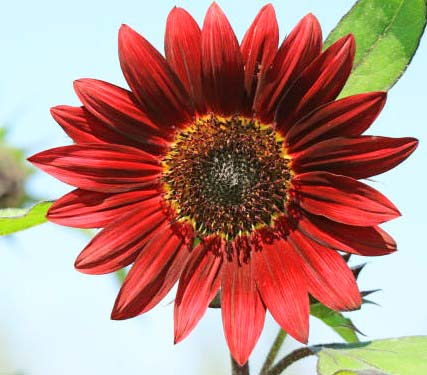
Planting Red Sunflower Seeds
Planting red sunflower seeds is a straightforward process, but it requires proper preparation and care to ensure successful growth. Here are the steps to follow:
- Choose a sunny location in your garden that receives at least six to eight hours of direct sunlight each day.
- Prepare the soil by removing any weeds or debris and loosening it with a garden fork or tiller.
- Sow the seeds directly into the soil at a depth of about one inch, spacing them six to twelve inches apart.
- Water the newly planted seeds thoroughly, ensuring that the soil remains consistently moist but not waterlogged.
Within a few weeks, you should start to see young seedlings emerging from the soil. As they grow, provide support for the plants by using stakes or trellises to prevent them from toppling over.
Caring For Red Sunflowers
To ensure the optimal growth and health of your red sunflowers, it’s essential to provide them with proper care and attention. Here are some key care tips:
- Water regularly: Red sunflowers have high water needs, especially during hot and dry periods. Water deeply and consistently, making sure the soil is moist down to the roots.
- Fertilize appropriately: Use a balanced slow-release fertilizer to provide essential nutrients to the sunflowers. Follow the instructions on the fertilizer package for the correct application rates.
- Protect from pests: Keep an eye out for common pests such as aphids and caterpillars. If you notice any infestations, treat them with organic pest control products or consult a gardening professional for advice.
- Deadhead spent blooms: Regularly remove faded or wilting flowers to encourage continuous blooming and prevent the plants from wasting energy on seed production.
By following these guidelines and providing the necessary care, you can enjoy a stunning display of red sunflowers in your garden. These vibrant and unique flowers are sure to be a conversation starter and a source of beauty in your outdoor space.
Benefits Of Red Sunflowers
Growing red sunflowers in your garden has numerous benefits. These beautiful flowers not only attract pollinators but also add vibrant colors to your outdoor space. Moreover, their striking appearance makes them perfect for creating stunning floral arrangements. Let’s explore these benefits in more detail:
Attracting Pollinators
Red sunflowers have vibrant colors and a unique shape that attract pollinators like bees and butterflies. These insects play a crucial role in the pollination process, helping plants reproduce and produce seeds. By planting red sunflowers, you are providing a valuable food source for these pollinators, contributing to the health of your garden ecosystem.
Adding Vibrant Color To Your Garden
Introducing red sunflowers into your garden adds a splash of vibrant color that catches the eye. The bright, bold petals create a striking contrast against the green foliage and the blue sky. Whether you plant them in flower beds, borders, or containers, these captivating flowers are sure to liven up any outdoor space and create a visual focal point.
Creating Stunning Floral Arrangements
The unique hue of red sunflowers makes them a perfect addition to any floral arrangement. Whether you’re creating a bouquet for a special occasion or want to add a pop of color to your home, these flowers are an excellent choice. Their large, centrally located dark brown or black disks surrounded by vibrant red petals create an aesthetically pleasing and captivating display.
When combined with other flowers or foliage, red sunflowers add depth and visual interest to any arrangement. Their striking appearance and unique colors make them a popular choice among florists and home gardeners alike.
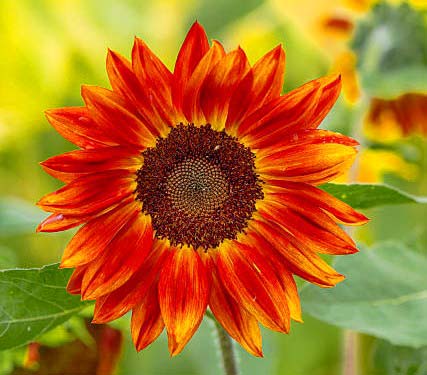
Tips For Successful Red Sunflower Gardening
Growing red sunflowers can add a vibrant pop of color to your garden. With their bold and striking appearance, these unique flowers are sure to be a standout feature. To help you successfully grow red sunflowers, here are some tips for providing proper sunlight and soil conditions, watering and fertilizing techniques, and dealing with common pests and diseases.
Providing Proper Sunlight And Soil Conditions
Red sunflowers thrive in full sun, so it’s important to choose a location in your garden that receives at least 6-8 hours of direct sunlight each day. Ensure that there are no nearby trees or structures that may cast shade on the plants.
In terms of soil, red sunflowers prefer well-drained, fertile soil. Before planting, prepare the soil by removing any weeds or debris and loosening it with a garden fork or tiller. Adding organic matter, such as compost or aged manure, can help improve the soil’s fertility and drainage.
Watering And Fertilizing Techniques
Watering red sunflowers appropriately is crucial for their growth and health. While they require regular watering, it’s important not to over-water them as this can lead to root rot. Aim to provide consistent moisture to the soil by watering deeply once or twice a week, rather than shallowly and frequently.
When it comes to fertilizing, red sunflowers benefit from a balanced, slow-release fertilizer. Apply the fertilizer according to the package instructions, typically in early spring before planting. Avoid using excessive amounts of nitrogen-rich fertilizers, as this can result in an abundance of foliage with fewer blooms.
Dealing With Common Pests And Diseases
Like any other plant, red sunflowers are susceptible to pests and diseases. One of the most common pests that affect sunflowers is the sunflower beetle. To keep these pests at bay, consider planting companion plants, such as marigolds or garlic, which can help repel them naturally.
In terms of diseases, red sunflowers may encounter fungal infections like powdery mildew. To prevent the spread of these diseases, ensure that there is adequate spacing between plants to provide good airflow. Additionally, avoid watering the foliage and water directly at the base of the plants instead.
| Providing Proper Sunlight and Soil Conditions | Choose a location with 6-8 hours of direct sunlight and well-drained soil. |
| Watering and Fertilizing Techniques | Water deeply once or twice a week and use a balanced, slow-release fertilizer. |
| Dealing with Common Pests and Diseases | Plant companion plants to repel pests and ensure good airflow to prevent fungal infections. |

Red Sunflower Varieties
When it comes to sunflowers, most people picture the traditional golden-yellow blooms towering over gardens and fields. However, there are also stunning red varieties of sunflowers that can add a unique and vibrant touch to any landscape. In this section, we will explore three captivating red sunflower varieties: Velvet Queen, Autumn Beauty, and Ruby Eclipse.
Velvet Queen
The Velvet Queen is a magnificent variety of sunflower that boasts rich, deep red petals. These flowers are known for their velvety texture, which adds an irresistible allure to any garden. Standing tall at an average height of 4-5 feet, Velvet Queen sunflowers make a bold statement wherever they are planted.
Below is a table detailing some key characteristics of the Velvet Queen sunflower:
| Characteristics | Description |
| Blooming Period | Summer to early fall |
| Height | 4-5 feet |
| Petals | Deep velvety red |
| Attracts | Butterflies and bees |
Autumn Beauty
The Autumn Beauty sunflower variety is renowned for its stunning warm shades of red, orange, and yellow petals. As the name suggests, these flowers evoke the beauty and vibrancy of the autumn season. Ranging from light red to deep burgundy, Autumn Beauty sunflowers are a captivating addition to any garden landscape.
Here are some features of the Autumn Beauty sunflower:
- Blooming Period: Late summer to early fall
- Height: 5-7 feet
- Petals: Warm shades of red, orange, and yellow
- Attracts: Birds, butterflies, and bees
Ruby Eclipse
The Ruby Eclipse sunflower is a truly mesmerizing variety with its mesmerizing dark burgundy petals. These flowers create a striking contrast against the backdrop of green foliage, capturing the attention of everyone who sees them. Adding a touch of mystery and drama to the garden, Ruby Eclipse sunflowers are a favorite among flower enthusiasts.
Take a look at the distinctive features of the Ruby Eclipse sunflower:
- Blooming Period: Summer
- Height: 3-5 feet
- Petals: Dark burgundy
- Attracts: Bees and butterflies
Companion Planting With Red Sunflowers
Red Sunflowers are a great companion plant in your garden, known for attracting beneficial insects and acting as a natural pest deterrent. These vibrant red flowers add a pop of color and provide an eco-friendly solution for better plant growth and increased biodiversity.
Bold And Beautiful: Companion Planting With Red Sunflowers
Red sunflowers are a stunning addition to any garden, with their vibrant petals and unique color. But did you know that companion planting with red sunflowers can bring even more beauty and benefits to your garden? By strategically planting certain species alongside your red sunflowers, you can create a harmonious and thriving ecosystem. In this article, we will explore the best companion plants for red sunflowers, the benefits of companion planting, and how to create complementary color schemes in your garden.
Best Companion Plants For Red Sunflowers
When it comes to companion planting with red sunflowers, some plants are more compatible than others. Here are a few suggestions for plants that can thrive alongside your red sunflowers:
- Tall purple asters: These tall and elegant flowers not only complement the dramatic color of red sunflowers but also attract beneficial insects like bees and butterflies.
- Scarlet bee balm: With its vibrant red blooms, scarlet bee balm adds a striking contrast to the red sunflowers while attracting pollinators such as hummingbirds.
- Blue salvia: The cool blue color of salvia creates a visually pleasing contrast when paired with red sunflowers. Additionally, salvia’s aromatic foliage can help deter pests.
- Marigolds: These cheerful yellow flowers not only provide a pop of color but also help repel harmful insects and attract beneficial ones.
- Tall purple coneflowers: Pairing red sunflowers with tall purple coneflowers creates a complementary color scheme that is visually appealing and supports a diverse range of pollinators.
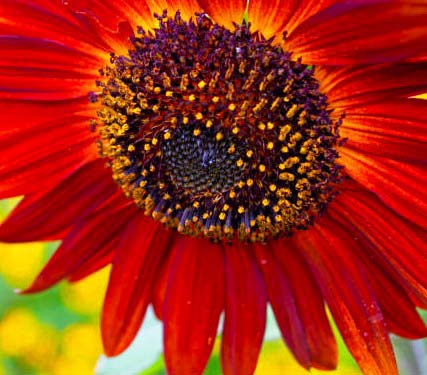
Benefits Of Companion Planting
Companion planting offers numerous benefits to both your red sunflowers and the overall health of your garden:
- Natural pest control: Some companion plants release chemicals or emit strong scents that repel pests, reducing the need for harmful pesticides.
- Promotion of pollination: Certain companion plants attract beneficial insects like bees and butterflies, which play a crucial role in pollinating flowers.
- Improved soil health: Companion plants with deep roots can help break up compacted soil, improving drainage and nutrient availability for red sunflowers.
- Weed suppression: When carefully chosen, companion plants can help shade out weeds, reducing competition for resources and minimizing the need for manual weeding.
- Enhanced biodiversity: Adding a variety of companion plants increases the diversity of plant species and attracts a wider range of beneficial insects, leading to a healthier and more balanced ecosystem.
Complementary Color Schemes
To create a visually striking garden, it’s important to consider complementary color schemes. When choosing companion plants for your red sunflowers, look for colors that naturally complement red, such as purple, blue, and yellow. These combinations create an eye-catching display that is pleasing to both humans and pollinators.
Consider planting tall purple asters or blue salvia near your red sunflowers to create a stunning contrast. Alternatively, adding a splash of yellow with marigolds or incorporating tall purple coneflowers can create a complementary color scheme that is sure to impress.
Harvesting And Preserving Red Sunflower Seeds
One of the joys of having red sunflowers in your garden is being able to harvest and preserve their seeds for future use. In this section, we will discuss the process of determining the right time for harvesting the seeds, as well as drying and storing them to ensure their freshness. We will also explore the various potential uses for these harvested seeds.
Determining The Right Time For Harvesting Seeds
Timing is crucial when it comes to harvesting red sunflower seeds. You want to ensure that the seeds are fully matured but have not started to fall off. To determine the right time for harvesting, look for the following signs:
- The back of the sunflower head turns brown.
- The seeds in the center of the head turn from green to a dark, plump brown.
- The petals start to wilt and fall off.
- The backs of the sunflower heads face down and the seeds are facing upwards.
Once these signs are present, it’s time to begin the harvest.
Drying And Storing Red Sunflower Seeds
After harvesting your red sunflower seeds, you’ll need to dry and store them properly to maintain their quality. Follow these steps:
- Remove the sunflower heads from the stalks by cutting them with a sharp knife.
- Remove any excess debris or petals from the heads.
- Place the sunflower heads in a dry and well-ventilated area, allowing the seeds to fully dry. This process may take several weeks.
- Once the seeds are thoroughly dried, gently rub them together to remove any remaining dried petals.
- Store the seeds in airtight containers to protect them from moisture, light, and pests.
- Label the containers with the date of harvest to keep track of their freshness.
By following these steps, you can ensure that your red sunflower seeds remain viable and flavorful for future use.
Potential Uses For Harvested Seeds
The harvested seeds from your red sunflowers have a multitude of potential uses. Here are a few ideas:
- Roasted snacks: Toss the seeds with a bit of oil and your favorite seasonings, then bake them in the oven for a tasty and nutritious snack.
- Bird feed: Red sunflower seeds are highly beneficial for birds, so consider offering them as a treat in bird feeders in your garden.
- Gardening: Use the seeds to grow new sunflowers or as a colorful addition to wildflower mixes in your garden.
- Art and crafts: Red sunflower seeds can be used for various creative projects, such as making jewelry or decorating homemade greeting cards.
With their vibrant color and versatility, the harvested red sunflower seeds are truly a treasure worth preserving.
Frequently Asked Questions On Red Sunflowers
Are There Natural Red Sunflowers?
No, there are no natural red sunflowers. Sunflowers come in shades of yellow, orange, and even brown, but not red.
What Does A Red Sunflower Symbolize?
A red sunflower symbolizes passion and love due to its vibrant and intense color. It represents strength, admiration, and enthusiasm.
What Do You Call A Red Sunflower?
A red sunflower is called a red sunflower. It is a unique variety of the sunflower plant that has red petals.
Conclusion
Red sunflowers add a vibrant touch to any garden or floral arrangement. With their unique color and striking beauty, these sunflowers stand out from the crowd. Whether you’re a gardening enthusiast or simply appreciate the beauty of nature, red sunflowers are a must-have.
Their bold presence and eye-catching blooms make them a popular choice among flower lovers. So, why not consider adding a splash of red to your garden with these stunning flowers?
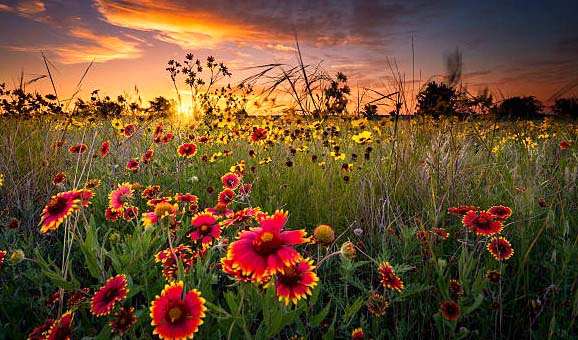
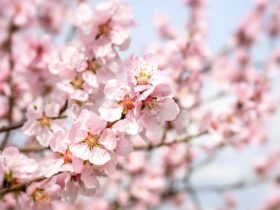

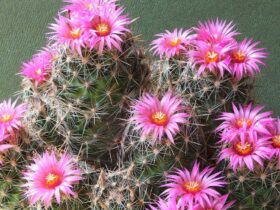
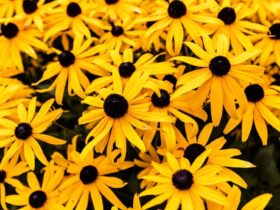
Leave a Reply